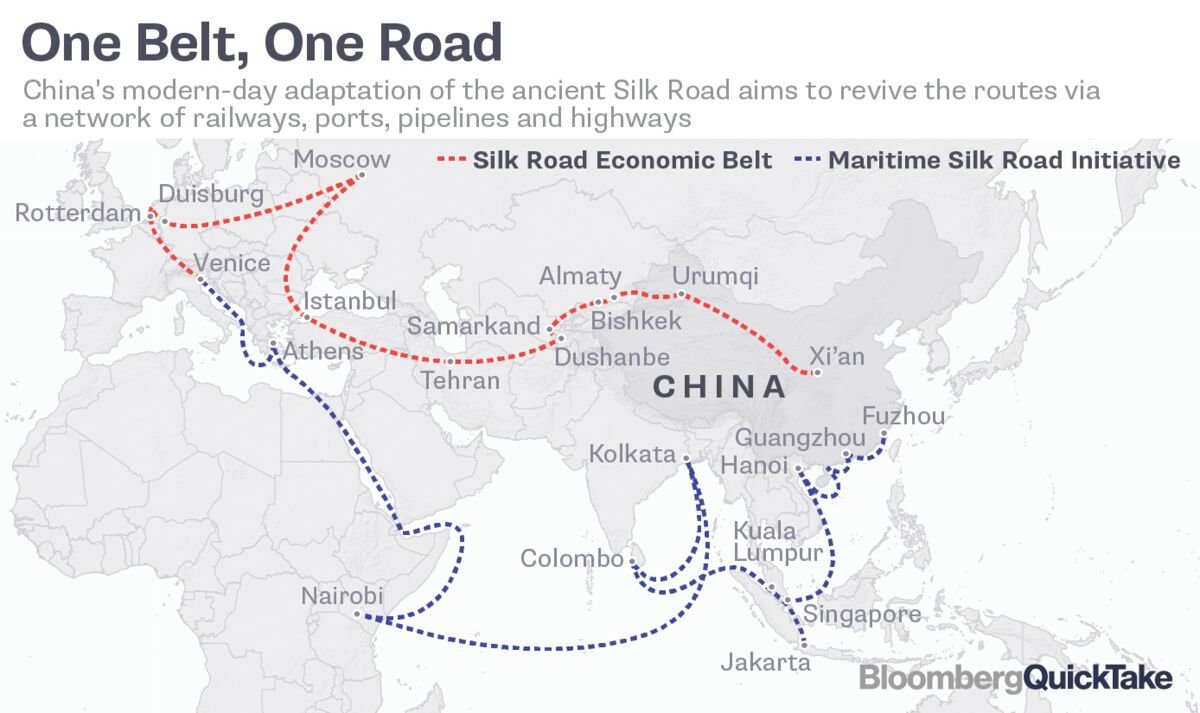China's Silk Road
Ancient Routes Carry a Nation's Influence West
By
| Updated Sep 8, 2016 1:05 AM UTC
The name Silk Road conjures images of caravans, desert steppes and adventurers like Marco Polo navigating the ancient trading routes connecting China with Central Asia, the Middle East, Africa and Europe. China’s modern-day adaptation aims to revive those routes via a network of railways, ports, pipelines and highways. President Xi Jinping champions his pet project as a means to spur development, goodwill and economic integration, as well as finding markets for China's over-producing factories. Critics — both along and beyond the Silk Road routes — are wary of China's push to spread its influence further west.
THE SITUATION
Xi has outlined a decades-long drive to grease the wheels of trade with infrastructure projects costing tens (or perhaps even hundreds) of billions of dollars. Typical plans include the development of ports in Malaysia and Tanzania or highways in Pakistan and Tajikistan. The vision goes beyond better connections; China is also encouraging its companies to invest in industrial projects such as utilities. To bankroll these ambitions, the government created the $40 billion Silk Road Fund in 2014; already, it's backed a dam in Pakistan and a liquefied natural gas operation in Russia. Other funding sources include the BRICS Development Bank and China's $100 billion Asian Infrastructure Investment Bank (AIIB) — an alternative to the World Bank that the U.S. and Japan initially pilloried for lacking the same standards of governance. Xi says more than 30 countries have signed formal agreements with China and 20-plus are cooperating on plans such as railways and nuclear power. China stands to gain not just by putting to work its underused industrial capacity and excess production of materials like steel, but also by promoting greater use of its currency. Partner nations are weighing economic benefits against an increasingly dominant superpower's demands. A deal for a rail project in Thailand collapsed because local officials were unwilling to grant China's request for property rights .
Source: Bloomberg

No comments:
Post a Comment